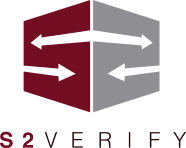The Risks of Using a PEO
As a business grows, so does its headcount, and as headcount grows, so does its HR responsibilities. However, growing businesses often can’t afford enough in-house HR resources to do the job and do it well. That’s where a PEO comes in.
A professional employer organization (PEO) provides comprehensive HR solutions to growing businesses in transactional, routine areas like processing payroll, managing benefits, enrollment, tax administration, and compliance activities.
PEOs save companies hours of time so they can focus on the operational areas of HR that really matter, like compensation planning, recruiting and hiring, learning and development, and performance management––plus key strategic HR initiatives like leadership development, organizational design, change management, and so on.
Companies use PEOs to manage their growing workforces better and mitigate the risk of that growth. However, PEOs can open businesses to greater risk than reward despite the benefits. Here’s how.
Loss of Control
Businesses that partner up with a PEO enter into a co-employment agreement where PEOs “co-employ” the employees. In doing so, companies pass off control over key HR processes and essential employee paperwork; decisions regarding benefits offerings, hiring, and firing may need to be shared or ceded to the PEO, which could affect company culture and strategy. For example, if employees love the current healthcare benefit carrier, but the PEO wants to move to a different one, there isn’t much the company can do.
Inaccessible Data
On that note, employee data is some of the most critical data to a growing business (see employee analytics), and companies need immediate access to that data to make quality decisions on the fly. Outsourcing key HR functions means that most, if not all, of that data is housed outside of company systems, making it difficult to access it when needed most.
Limited Access to HR for Employees in a PEO
Employees of all kinds at companies of all sizes face workplace difficulties that require HR support (threats to workplace safety, payroll issues, and benefit enrollment issues, to name a few). Since PEOs serve several clients simultaneously, employees might experience long wait times when they reach out to HR for help––and might receive impersonal support when they finally reach the PEO. The result? A negative hit to employee morale.
Compliance Not Guaranteed
PEOs are responsible for ensuring their clients comply with employment laws and regulations. Still, if the PEO fails to fulfill these obligations correctly, it can expose the business to major legal and financial risks. To mitigate this risk, it’s essential to thoroughly vet a PEO’s track record and the specific legal protections outlined in the PEO contract.
Cost of PEO Can Outweigh Value
PEOs typically charge fees based on the company’s employees and the services provided as a percentage of payroll or a flat fee. In some cases, however, the cost of using a PEO may outweigh the benefits, especially for cash-crunched businesses. It’s crucial to perform a cost-benefit analysis to determine if the financial investment in a PEO is right for the organization.
Limited Customization
PEOs often offer a one-size-fits-all approach to HR services and benefits packages. This makes sense since PEOs are, after all, simply businesses looking to create repeatable, scalable processes and products that help them grow. However, this can be limiting for companies with unique needs or those that want to differentiate themselves through employee benefit offerings.
For a deeper dive into PEOs, check out this week’s episode of America Back to Work. We sat down with Brent Tilson, the founder and CEO of TilsonHR, a national PEO providing a comprehensive suite of business solutions to help businesses grow and thrive, to get his take on the risks and rewards of outsourcing HR in today’s employment landscape.







